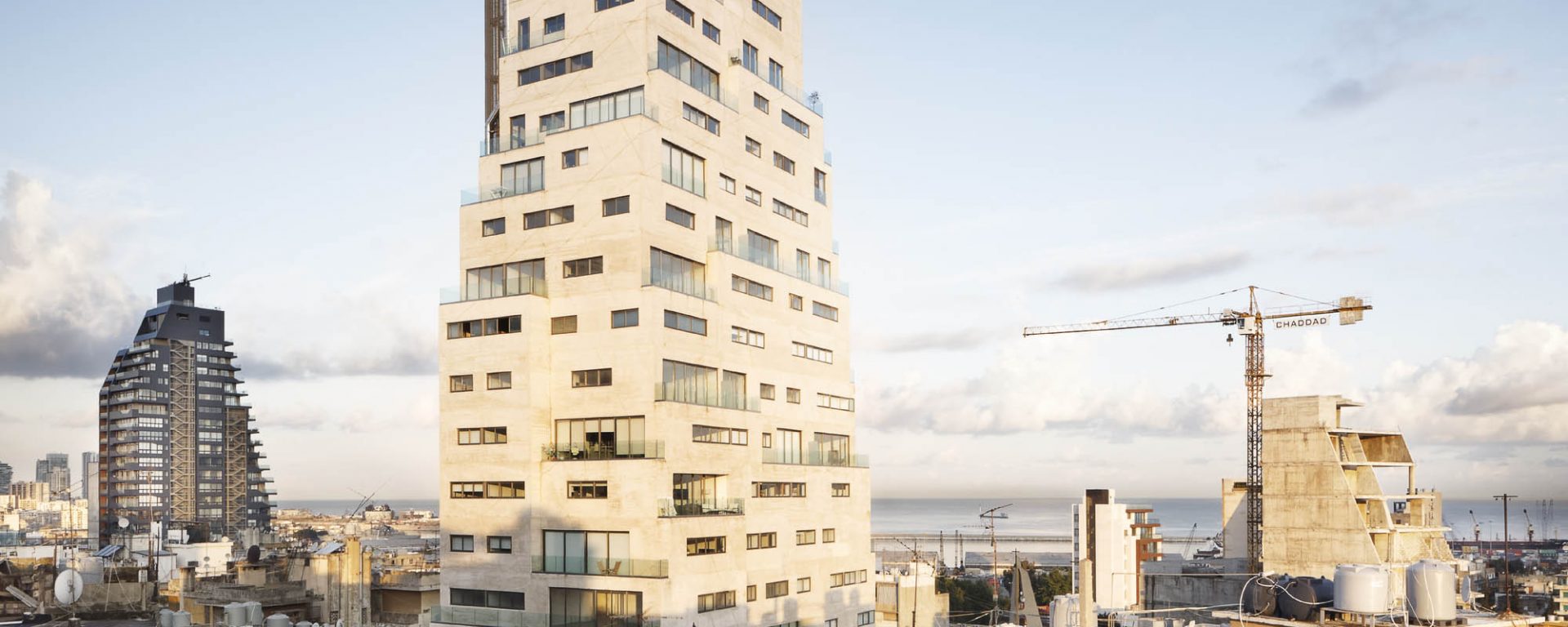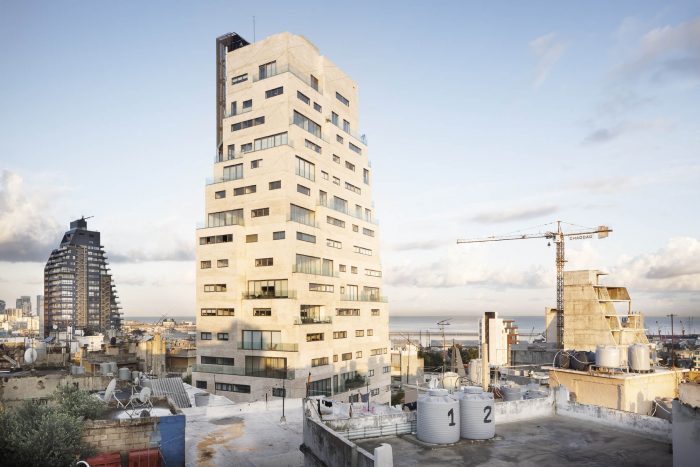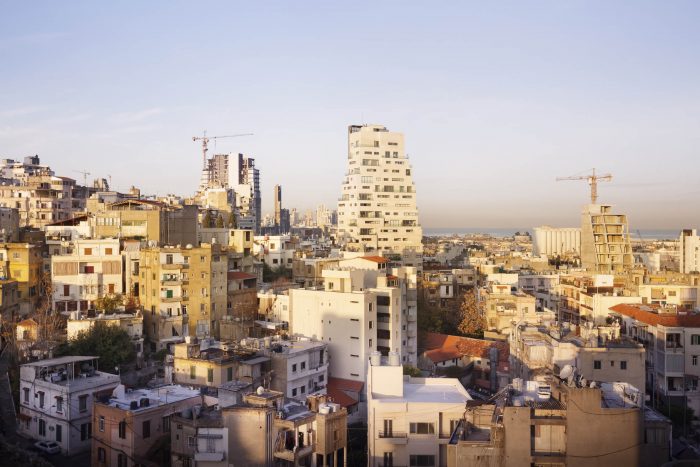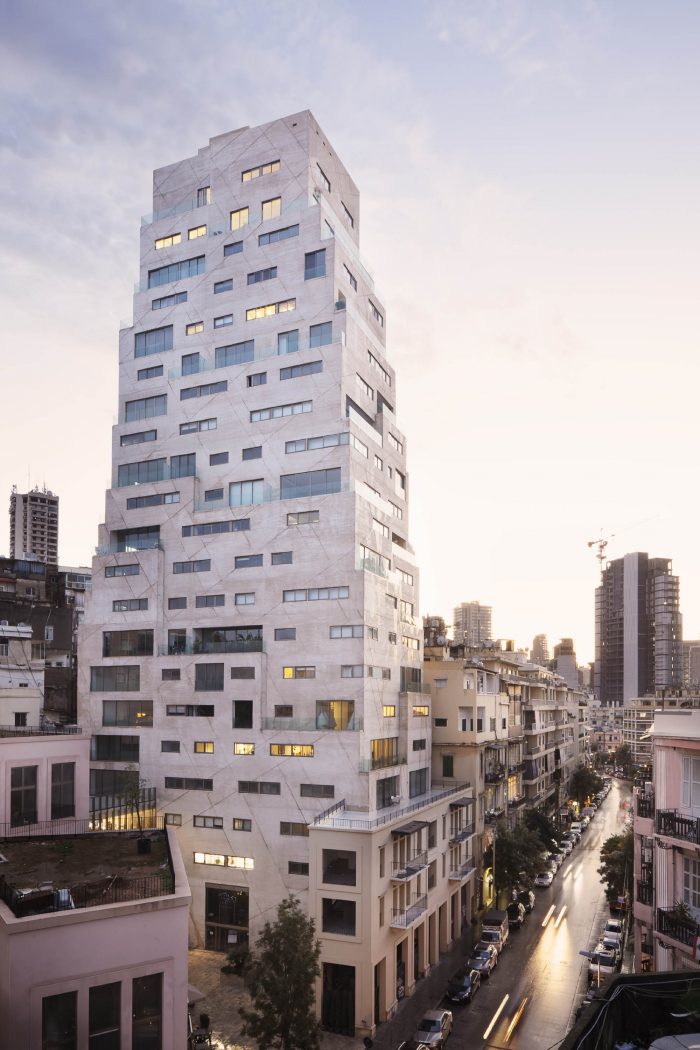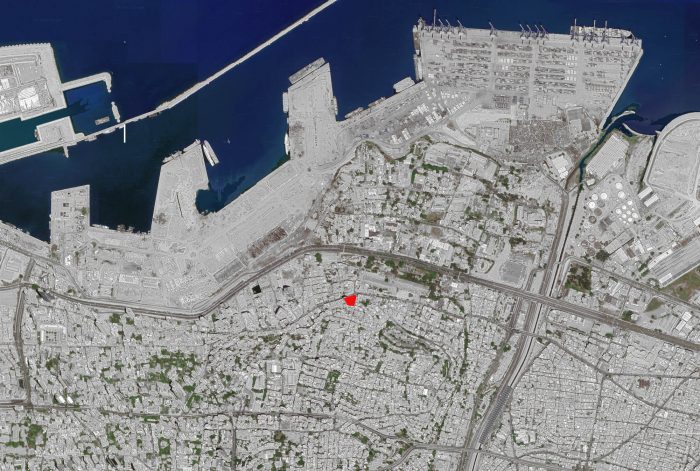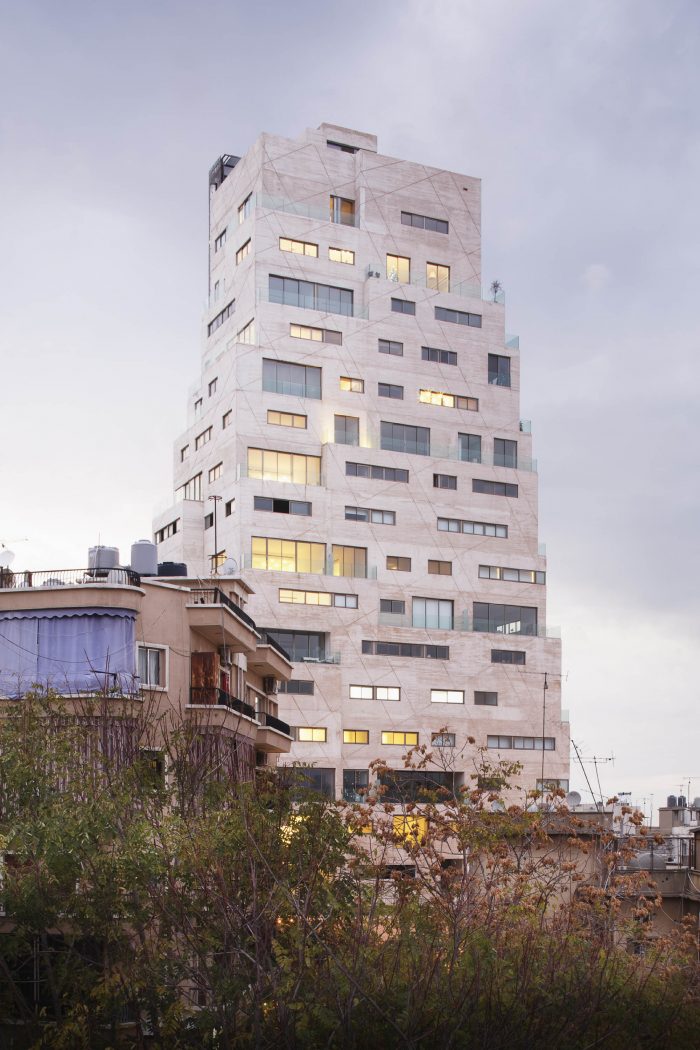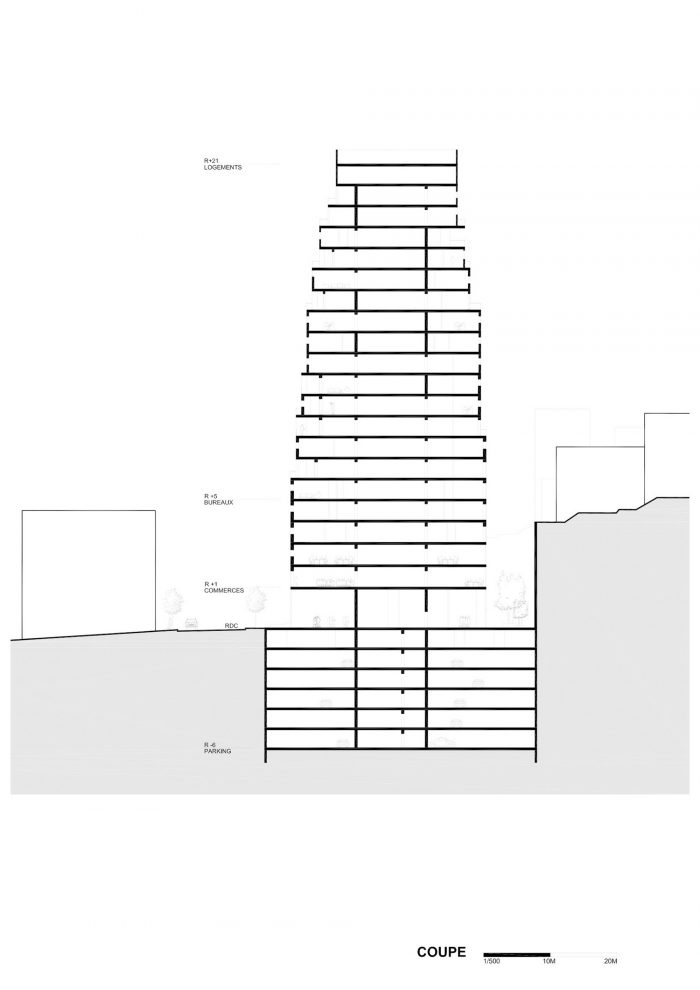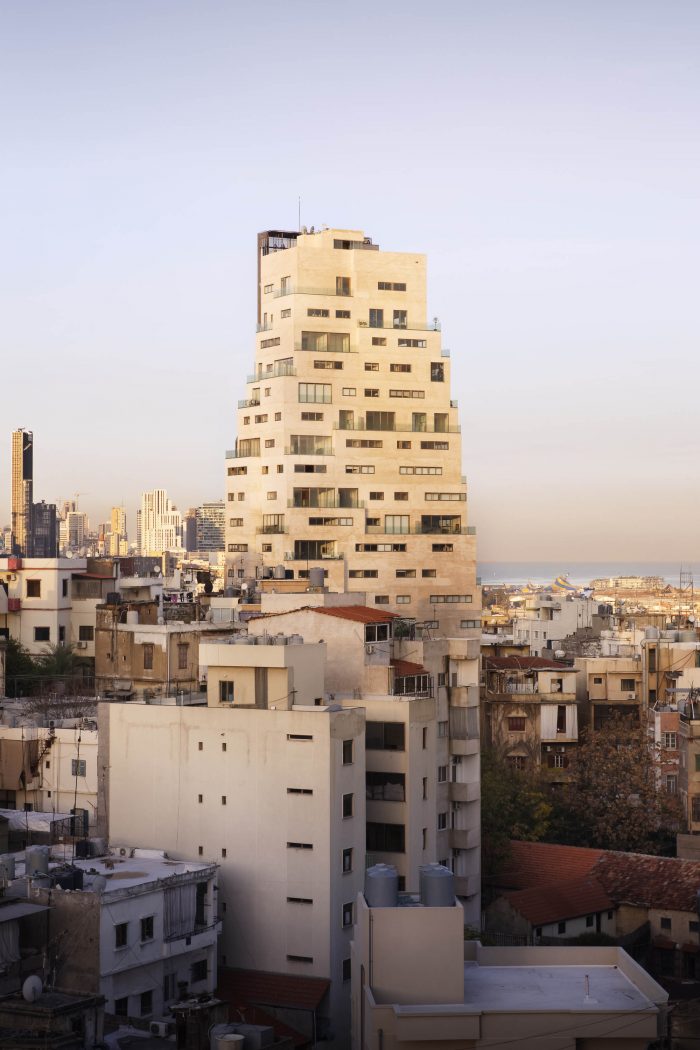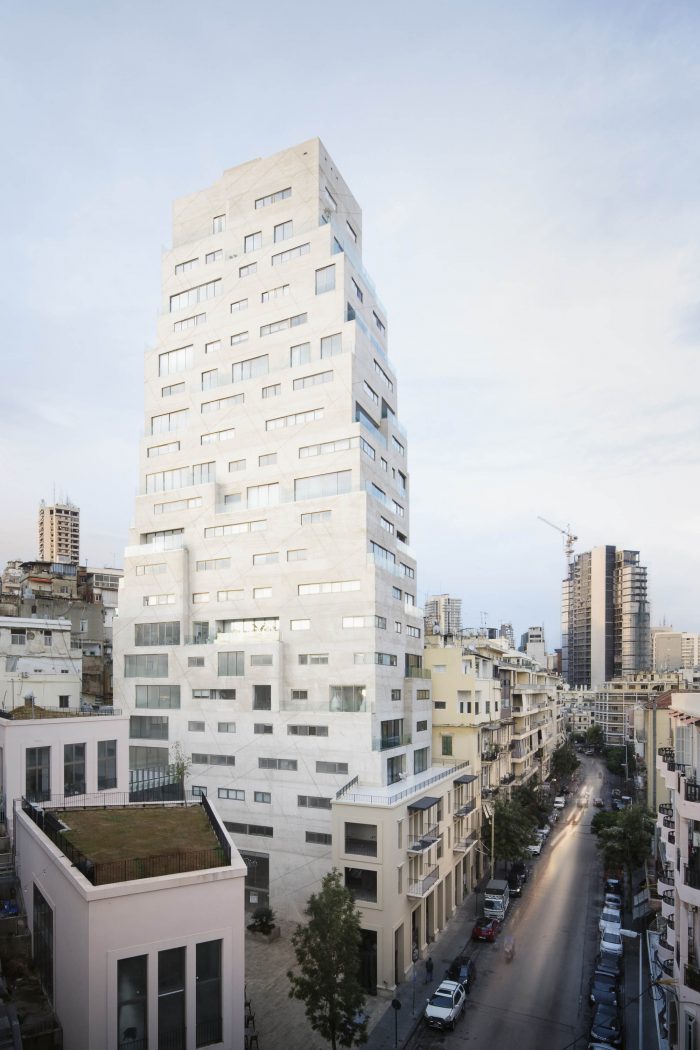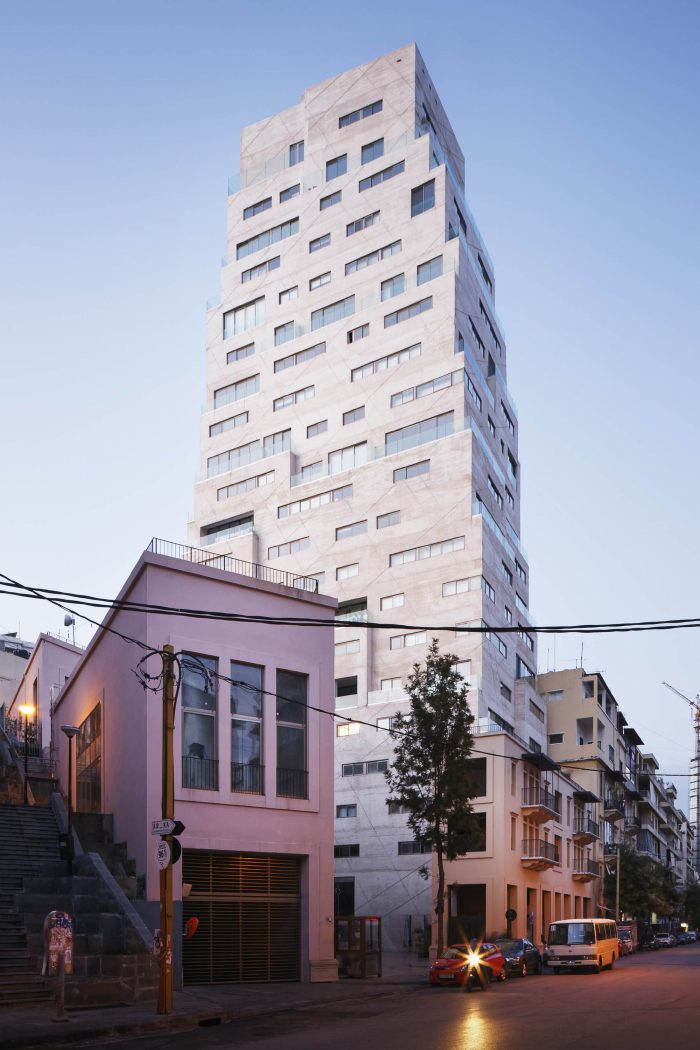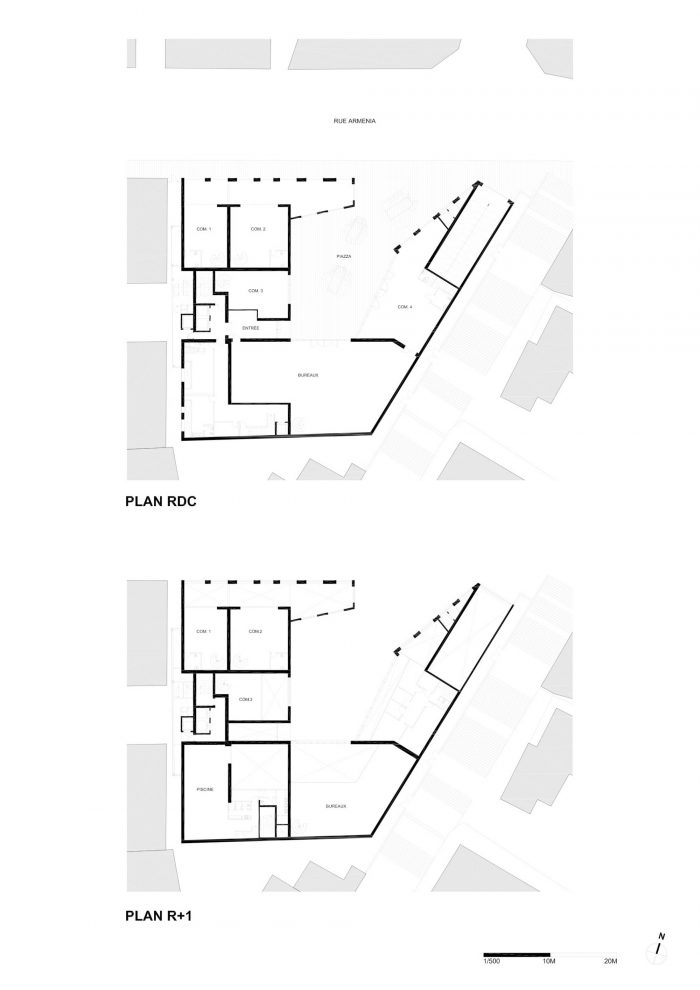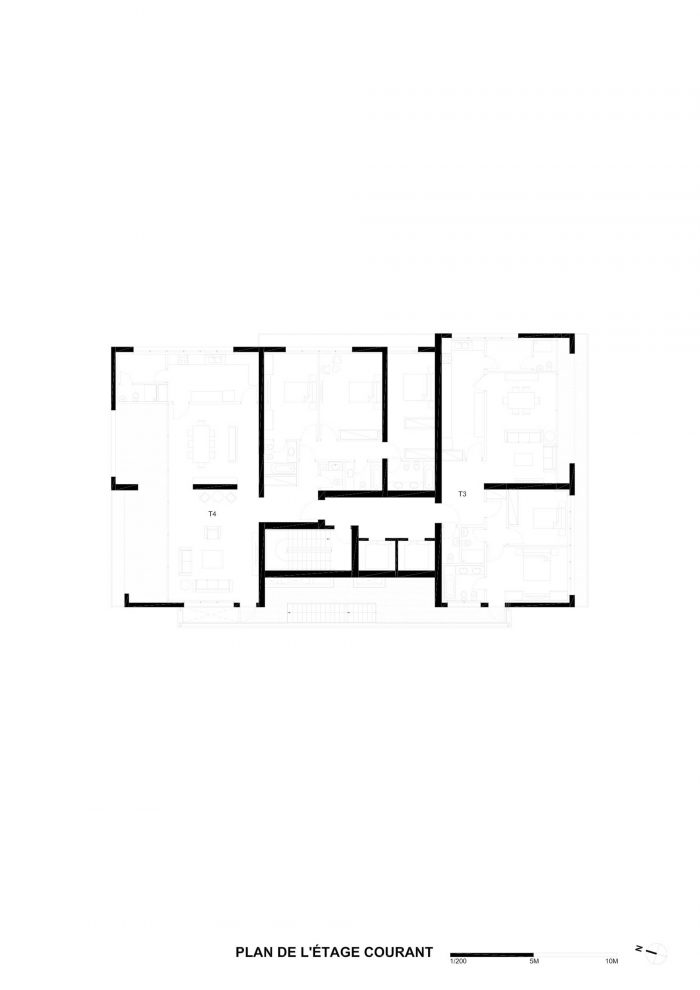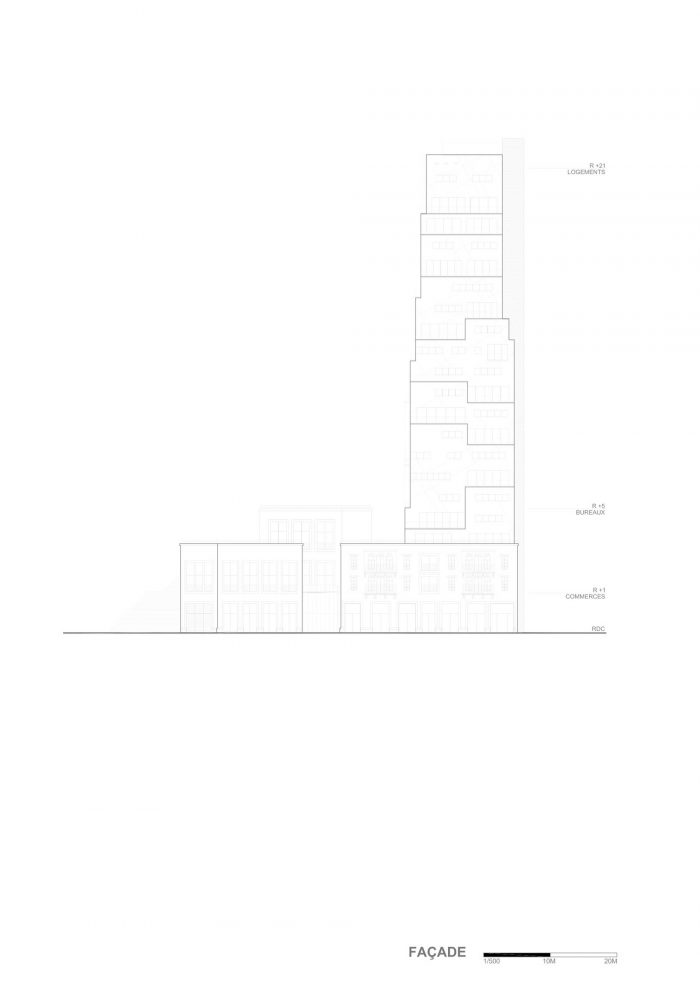Aya是一座具有原创性概念的塔楼,是对阿拉伯住宅的深入研究的结果,是马什雷克传统建筑的原型和新技术的混合,是对环境敏感的现代设计的住宅。
Aya is a tower with an original concept, resulting from in-depth research on the Arab dwelling, a hybridization of archetypes of the traditional architecture of the Mashreq and new technologies for dwellings with a context-sensitive and contemporary design.
这个地区的粗糙地形,其岩石土壤、石阶和不同的建筑激发了建筑的运动,将发生在人类高度上的东西向上提升到天空。面向街道的部分老建筑被保留了下来,并创建了一个通往塔楼的小广场。沿着楼梯,两个体量出现了,顺着坡度和面对的建筑物的高度。因此,塔楼只是稍微改变了街道的配置,它只是在小广场上加宽了新的商店。
The rough terrain of this district, with its rocky soil, stone staircases and diverse buildings inspired a construction in movement, raising upwards to the sky what happens at a human height. Part of the older building facing the street has been preserved and a small plaza leading toward the tower has been created. Along the staircase, two volumes emerge, following the slope and the heights of the buildings facing them. Thus, the tower only slightly changes the configuration of the street, which is simply widened on the little plaza with new shops.
这些公寓被设计成房屋,每个都有其特定的功能,并且每个都享有一个露天阳台。塔楼的结构是由一连串的后退组成的,这使得每间公寓都能完全不受阻碍地看到天空。根据塔内公寓的位置,他们的露台要么面向北边的海,要么面向东边的山,要么面向城市的南部地区。后退是根据公寓的不同方向来调整体量的。通过放弃传统的梯田堆叠,立面由间隙组成,这些间隙在方向上是水平的,在退让上是垂直的。
The apartments are designed as houses, each with its specific features, and each enjoying an open-air terrace. The tower’s structure is comprised of a succession of setbacks, which gives each apartment a fully unobstructed view of the sky. According to the position of the apartments in this tower, their terrace is oriented either facing the sea to the north, the mountains toward the east or facing toward the southern area of the city. The setbacks sculpt the volume according to the varied orientations of the apartments. By eschewing a conventional stacking of terraces, the façades are composed of gaps, which are horizontal for the orientations, and vertical for the setbacks.
后退的原则导致了内部承重墙的原则,以吸收地震的冲击。外墙还发挥着热力作用。最大限度地减少空调的使用,在托架的层面上选择了双层通风的墙。结构部分由普通混凝土制成,双层皮肤由白色混凝土制成。
The principle of setbacks led to the principle of an internal load-bearing wall to absorb seismic shocks. The exterior walls also play a thermal role. Reducing the use of air-conditioners to the maximum, double ventilated walls were chosen for the level of the bays. The structural part is made of ordinary concrete and the double skin of white concrete.
平面图的灵感来自于马什里克传统房屋的不同平面图,以实现现代的蜕变,将房间布局置于方块中,即逐步进入的原则(见计划的早期研究)。
Floor plans have been inspired by the different floor plans of traditional houses of the Mashriq to realize a modern metamorphosis that places the room layouts in squares, and namely the principle of gradual entry (see early studies on the plan).
这种方法并不是要严格更新阿拉伯平面图,而是要在传统平面图系统和现代系统之间进行转换,前者主要是组织聚会空间,而后者则更注重组织个人专用空间。
This approach, which does not pretend to strictly update the Arab plan, seeks rather shift the lines between the system of the traditional plan, which mainly organized the space for gatherings, and the modern system, which is much more concentrated on organizing space dedicated to the individual.
计划的起源。阿雅大厦的公寓遵循传统阿拉伯房屋的模式。这种类型的配置在卡塔尔、摩洛哥以及黎巴嫩建造的房屋中都可以找到。塔楼保留了这种计划,其灵感来自于反复出现的triptyque:天井、iwan(拱顶房)和majlis(接待室)。像传统的房子一样,Aya塔的公寓整合了这个系统。
The origin of the plans. Apartments in the Aya Tower follow the model of traditional Arab houses. This type of configuration is found in houses built in Qatar, Morocco as well as Lebanon. The tower retains this plan, inspired by the recurring triptyque: patio, iwan (vaulted room), and majlis (reception rooms). Like a traditional house, the apartments in the Aya Tower integrate this system.
Architects: SOA Architectes
Area: 7254 m²
Year: 2021
Photographs: Camille Gharbi
Client:HAR Properties
Construction Phase Architect:R&K
Technical Engineer :Kephren Ingénierie, Riad Ghazali Ingénierie
City:Beirut
Country:Lebanon

